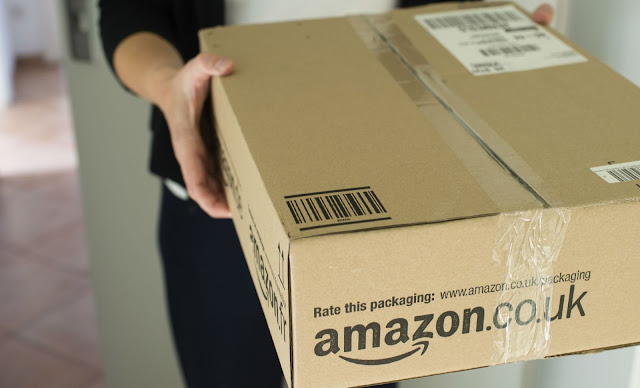
Competition is tough in the eCommerce landscape, especially given that brick and mortar stores turned to eCommerce for more sales during the pandemic. The global health crisis led to a surge in eCommerce as more brands, and traditional businesses went digital.
In a statement from former Deputy Secretary-General of the United Nations Conference on Trade and Development (UNCTAD), Isabelle Durant, she highlighted that the pandemic "sped up a digital transition that will have lasting impacts on our societies and daily lives."
With more entrepreneurs transitioning into eCommerce, online sellers must make necessary adjustments to improve their performance. Having a robust pricing strategy is one of the effective means of achieving a competitive edge in the eCommerce industry.
What Is an eCommerce Pricing Strategy?
The necessity of understanding eCommerce pricing strategy is crucial for the overall success of your online business. Knowing the different pricing strategies you can implement for your eCommerce operation will not only bring sales and revenue but can also help scale your online business to a higher level.
eCommerce pricing strategy is simply a method that online sellers or retailers use to price their products in response to various factors, including but not limited to:
- production cost
- market competition
- revenue goals
- average order value
It involves well-thought plans to determine how to obtain a competitive price for your product listings without sacrificing your profit margin.
A common misconception among sellers is that pricing is simply a discounting strategy. However, although the discounting technique is a pricing method, it is just one example of the various eCommerce pricing strategies sellers can use to improve their business.
Different eCommerce Pricing Strategies for Your Online Business
Pricing your product listings on Amazon, Walmart, Shopify, or eBay requires a strategic approach. Setting the price too high may dissuade customers, while setting it too low may be detrimental to your profit margin.
To help you obtain a competitive advantage and increase sales conversion, here are some of the popular pricing strategies you may apply to your eCommerce business.
Value-Based Pricing
Value-based pricing is a pricing method that relies on the customers' perceived value of the product or service a business offers. It means that online sellers can set the price of their listings based on how much consumers believe their products are worth.
This pricing method is ideal for businesses or brands with a loyal following. Value-based pricing capitalizes on a customer's willingness to pay.
The only downside of this approach is it requires extensive market research and analysis, which can be burdensome for sellers launching new brands or products that are yet to establish value.
Bundle Pricing
Bundle pricing is a popular pricing strategy utilized by Amazon sellers. It combines complementary products and offers them at a single and often reduced price.
This pricing strategy is ideally used when you have multiple complementary products that can provide customers with the most value. An excellent example of bundle pricing would be offering a facial wash and moisturizer set as a bundle.
Discount Pricing
Discount pricing strategy is one of the common pricing strategies that business owners implement. This pricing method involves lowering the product price to a specific price point for a limited period of time.
Sellers offer price markdowns to consumers to entice them to purchase the item. It can be in the form of a percentage discount or outright price slash. Aside from enticing customers to buy the product, a discount pricing strategy also helps increase customer loyalty to a brand.
Penetration Pricing
The penetration pricing method is a strategy that involves lowering of price during the initial offering. Lowering the price of your product allows you to penetrate the market while attracting customers away from competitors.
This pricing strategy relies heavily on low price points to make consumers more aware of the new product entering the market. Once the customer base has been established, online sellers can then raise the product price to a higher price point.
The main goal of this strategy is to penetrate the market at the initial offer. Hence, the name penetration pricing.
Cost-Plus Pricing
Cost-Plus Pricing, otherwise known as Markup Pricing, derives the product price from a fixed percentage added to the production cost of a product unit. This strategy relies not on external factors but on unit cost. Hence, making it an easy-to-use pricing strategy for an eCommerce business.
However, since it does not rely on external factors such as competitors' pricing and consumer demand, it inadvertently disregards the price elasticity of demand. If not utilized properly, this pricing technique can lead to overpricing or underpricing.
Price Skimming
Price skimming is another pricing strategy you can use for your eCommerce business. In contrast to penetration pricing, price skimming offers the highest initial price to consumers.
Instead of offering a low price on its initial entry on the market, sellers offer a higher price. When the demand of customers willing to pay for the highest price has been satisfied, the seller can then lower the product price to attract another customer segment. Prices are lowered over time as sellers skim through various customer segments.
Competitive Pricing
Competitive pricing strategy is another commonly used pricing method in the eCommerce market. It is often utilized by Amazon sellers who are competing for the Amazon Buy Box.
This pricing method involves strategic price point selections based on the market competitors. Sellers can either lower or increase their listing price depending on how the market competitions adjust their listing prices. This type of pricing strategy is highly effective when there are multiple sellers of similar products in the same marketplace.
More often than not, sellers utilize repricing software to perform price adjustments on their behalf. Such software can adjust listing prices based on various factors, including but not limited to price change notifications, competitors' behavior, and overall market conditions.
Pricing and Other Marketing Campaigns
Price plays a crucial role in your eCommerce business, which is why you need to understand how you can optimize your product pricing with the help of the different pricing strategies mentioned above.
It would help if you also consider other seller tools to further improve your overall business performance. If you are an Amazon seller, you can always automate your Amazon PPC campaign to help you increase your brand's reach and your business's profitability.
By implementing pricing strategies and utilizing other marketing campaign tools, you can maximize your business potential and its overall business performance.
Author’s Bio:
http://en.gravatar.com/junelas
Junel Ayala is a writer at Seller Snap. Over the past years, he has been engaged in project management, SEO content writing, and local SEO marketing for various firms in the United States and Europe.
https://www.aihello.com/resources/blog/ecommerce-pricing-strategies/


